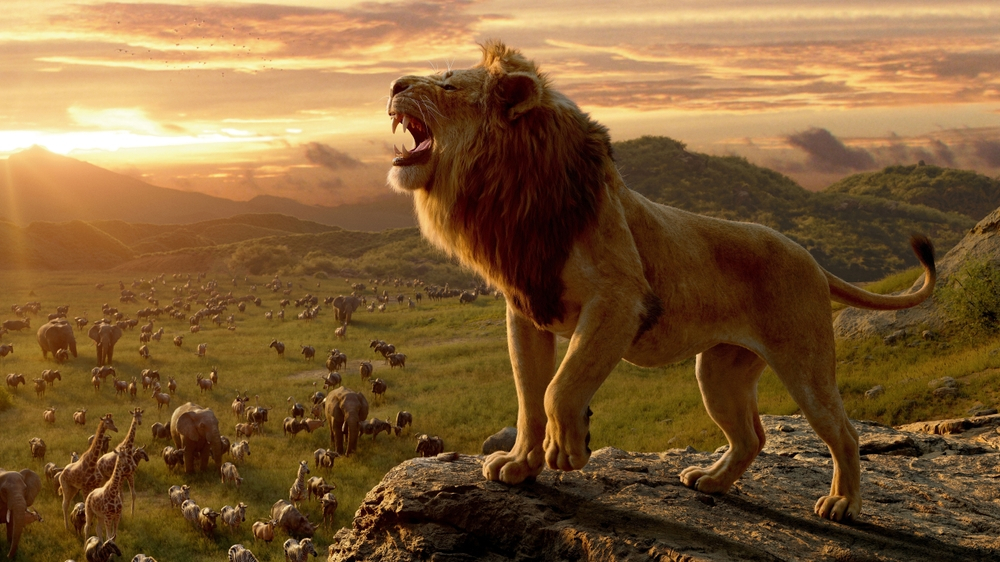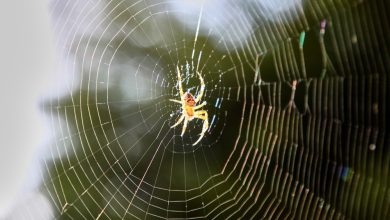Roar, Chirp, and Splash: Fun Facts About Animals for Kids

Welcome to “Roar, Chirp, and Splash: Fun Facts About Animals for Kids”! The animal kingdom is a vast and diverse world brimming with fascinating creatures, each with its unique characteristics and behaviors. From the majestic lions that roam the savannas to the colorful birds that fill our skies with song, and the mysterious underwater dwellers like dolphins and turtles, there’s so much to discover and learn.
Understanding fun facts about animals not only enriches our knowledge but also sparks curiosity and a sense of wonder about the natural world. Learning about animals helps us appreciate the intricate web of life and the important roles each species plays in our ecosystem.
We encourage you to dive into this exciting journey of exploration and discovery. As you uncover the amazing facts and stories about these roaring, chirping, and splashing animals, you’ll find that there’s always something new and fun to learn. So let’s get started and have fun exploring the incredible world of animals together!
Section 1: Roaring Animals
Lions
Lions are captivating creatures renowned for their powerful roars, which can be heard up to five miles away! This unique vocalization serves multiple purposes, such as marking territory, communicating with pride members, and deterring intruders. Speaking of prides, lions are the only big cats that live in social groups.
A pride typically consists of related females, their cubs, and a few male lions. The females are the primary hunters, working together to stalk and capture prey, while the males protect the pride from rival males and other threats. This social structure and cooperation within the pride highlight the fascinating and complex behaviors of these majestic animals.
Tigers
Tigers, the largest of all big cat species, exhibit remarkable differences among their subspecies, each adapted to its unique habitat. For example, the Bengal tiger, found predominantly in India, sports a vibrant orange coat with dark stripes and is known for its impressive strength. In contrast, the Siberian tiger, living in the frigid forests of Russia, has a paler coat and thicker fur to withstand harsh winters.
These distinctive features help each subspecies blend seamlessly into their respective environments—a vital aspect of their survival strategy. Tigers employ advanced camouflage techniques, using their striped coats to break up their shape and blend into tall grasses and dense forests. This stealth, combined with their powerful build, enables them to ambush prey with incredible precision. By studying these majestic creatures, we gain insight into the adaptability and ingenuity of the animal kingdom.
Bears
Bears are among the most intriguing animals in the wild, with various species exhibiting unique characteristics and behaviors. Two well-known species are polar bears and grizzly bears. Polar bears, residing in the Arctic, are excellent swimmers and rely on sea ice to hunt seals, their primary food source. Their thick white fur provides camouflage against the snowy landscape and insulation from the cold.
On the other hand, grizzly bears, found in North America, are adept at foraging and fishing, particularly during the salmon runs. One fascinating aspect of bear behavior is hibernation. Contrary to popular belief, not all bear species hibernate, but those that do enter a state of deep sleep during the winter months.
During hibernation, a bear’s metabolism slows dramatically, allowing it to conserve energy while living off its stored body fat. This incredible adaptation enables bears to survive harsh winters when food is scarce. Each bear species has developed specialized traits and behaviors to thrive in their unique habitats, showcasing the remarkable diversity of the animal kingdom.
Section 2: Chirping Animals
Birds
Birds are incredibly diverse and use a variety of communication methods, primarily through songs and calls. Songs are typically more complex and are often associated with mating rituals, territory establishment, and identification of peers. For instance, songbirds like the nightingale are renowned for their melodious tunes which they use to attract mates and ward off rivals.
Calls, on the other hand, are generally simpler sounds used for basic communication such as signaling danger, keeping flock members together, or indicating the presence of food. Beyond their fascinating vocalizations, many bird species embark on astounding migration journeys. Birds like the Arctic Tern travel thousands of miles between their breeding and wintering grounds, crossing entire continents and oceans.
This incredible feat of endurance and navigation showcases their inherent adaptability and the marvels of the natural world. These migrations ensure they can exploit different environments at optimal times of the year, underscoring the remarkable survival strategies of birds.
Insects
Insects play a crucial role in our ecosystems, and some, like crickets and cicadas, have particularly fascinating methods of communication. Crickets are well-known for their chirping sounds, which males produce by rubbing their wings together in a process called stridulation. These chirps vary in rate and intensity depending on the temperature and the cricket’s intentions, such as attracting a mate or deterring rivals.
Cicadas, on the other hand, are famous for their loud calls created using specialized structures called tymbals, located on their abdomens. These sounds serve primarily for mating purposes and can sometimes be so loud they are heard miles away! Beyond their intriguing communication skills, insects like crickets and cicadas play essential roles in the ecosystem.
They serve as a critical food source for many animals, help in the decomposition process, and contribute to soil aeration. Their diverse roles ensure the balance and health of ecosystems, showcasing their indispensable place in the natural world.
Frogs
Frogs are fascinating amphibians known for their distinctive calls and unique life cycle. Each frog species has its own call, which males typically use to attract females during the breeding season. These calls can range from croaks and ribbits to trills and peeps, with each sound serving specific purposes like marking territory, signaling readiness to mate, or deterring competitors.
Beyond their vocalizations, frogs undergo an extraordinary transformation throughout their life cycle, a process known as metamorphosis. Starting as eggs laid in water, they hatch into tadpoles, which are entirely aquatic and breathe through gills.
As they mature, tadpoles gradually develop legs, lose their tails, and their gills transform into lungs, allowing them to live on land as adult frogs. This remarkable journey from egg to adult showcases the incredible adaptability and resilience of frogs, underscoring the wonders of the animal kingdom.
Section 3: Splashing Animals
Dolphins
Dolphins are celebrated for their remarkable intelligence and intricate social behaviors, captivating the interest of scientists and nature enthusiasts alike. Known for their advanced cognitive abilities, dolphins can solve complex problems, exhibit self-awareness, and even use tools, such as creating sponges to protect their snouts while foraging on the seafloor.
Socially, dolphins live in tight-knit groups called pods, demonstrating strong bonds through cooperative hunting, playful interactions, and collective care for the young and injured members of their community. Communication among dolphins is equally fascinating; they use a sophisticated system of clicks, whistles, and body language to convey information and coordinate activities.
Specific clicks, called echolocation, aid in hunting by bouncing sound waves off objects to determine their location and size, enabling dolphins to pinpoint and catch prey with incredible precision. This blend of intelligence, social complexity, and unique communication methods underscores the exceptional nature of dolphins, making them one of the most intriguing marine species.
Fish
Fish are incredibly diverse creatures with an astonishing array of adaptations that enable them to thrive in various aquatic environments. One of the most mesmerizing adaptations is bioluminescence, seen in species like the deep-sea anglerfish. These fish emit light from specialized organs called photophores, which they use to attract prey in the pitch-black depths of the ocean.
Additionally, fish can be categorized into various types, including freshwater fish like trout and catfish, which inhabit rivers and lakes, and marine fish such as tuna and clownfish, found in the vast expanses of the ocean.
Each type of fish has evolved unique traits suited to their specific habitats, whether it’s the ability to navigate complex freshwater streams or to migrate long distances across the ocean. This diversity and adaptability highlight the fascinating world of fish, showcasing nature’s ingenuity in shaping life beneath the water’s surface.
Turtles
Turtles are extraordinary creatures renowned for their remarkable longevity and incredible migratory journeys. Some species of turtles can live for over a century, with the oldest known individual, a Seychelles giant tortoise named Jonathan, living well into his 190s! This impressive lifespan allows turtles to witness and adapt to significant environmental changes throughout their lives.
When it comes to migration, sea turtles are particularly notable for their epic voyages. Species like the leatherback sea turtle travel thousands of miles across oceans to return to the exact beach where they hatched, a phenomenon known as natal homing. This incredible feat is achieved through a combination of environmental cues and possibly even the Earth’s magnetic field.
In contrast, land turtles, also known as tortoises, have much more limited ranges, typically residing in specific terrestrial habitats without the need for long migrations. Sea turtles also differ from their land-dwelling relatives in their adaptations; for instance, sea turtles have flippers for swimming, while land turtles have sturdy, elephantine legs designed for a life on solid ground. These distinctions between sea and land turtles highlight the incredible diversity within the turtle family and showcase their unique adaptations to both aquatic and terrestrial environments.
Section 4: Fun Activities
Engaging children in animal-themed crafts and games can be a delightful way to spark their curiosity about the natural world. Craft ideas could include creating paper plate turtles, dolphin origami, or painting a vibrant rainbow fish. These activities not only enhance creativity but also help kids learn about different species in an enjoyable manner.
For further learning, parents and educators can recommend books such as “The Very Hungry Caterpillar” by Eric Carle, which offers insight into the life cycle of butterflies, or “National Geographic Little Kids First Big Book of the Ocean” by Catherine D. Hughes, which introduces young readers to marine life.
Additionally, educational videos on platforms like YouTube or streaming services can provide visual and auditory learning experiences—documentaries like “Planet Earth” are excellent resources. For an immersive experience, visiting a local zoo or aquarium can be incredibly enriching.
Kids can witness animals first-hand, deepening their understanding and appreciation of these creatures. Many zoos and aquariums also offer interactive exhibits and educational sessions, making them perfect destinations for fun and informative family outings.
Conclusion
In this exciting journey through the animal kingdom, we’ve discovered some amazing and fun facts about frogs, dolphins, fish, and turtles. From witnessing the incredible transformation of tadpoles into adult frogs to understanding the sophisticated communication methods of dolphins, each creature holds unique and fascinating secrets.
We’ve marveled at the bioluminescence of deep-sea fish and the astounding migratory feats of sea turtles. These stories highlight the extraordinary diversity and adaptability of animals, showcasing the wonders of nature.
Remember, the adventure doesn’t end here! Keep exploring and learning about the animal world around you. There are countless species with incredible stories waiting to be discovered. Whether it’s through books, documentaries, or visits to zoos and aquariums, there’s always more to learn and appreciate about these amazing creatures.
So, don’t hesitate to share what you’ve learned with your friends and family. Engaging others in the wonders of the animal kingdom can inspire a shared love for nature and a deeper understanding of the incredible world we live in. Happy exploring!




